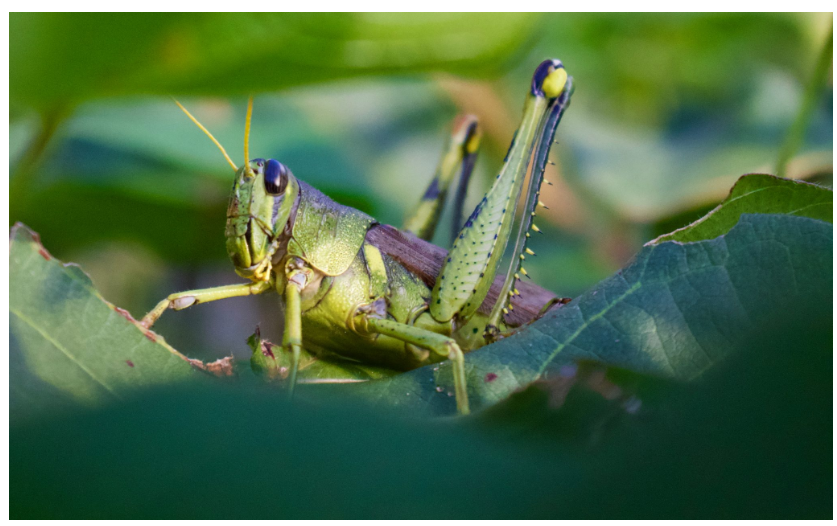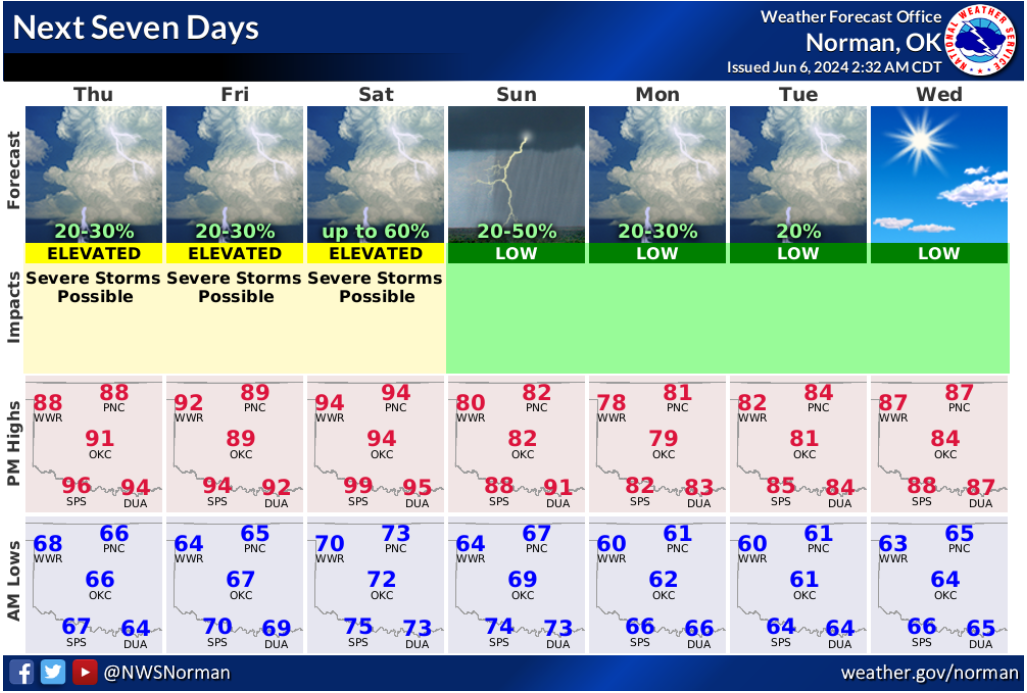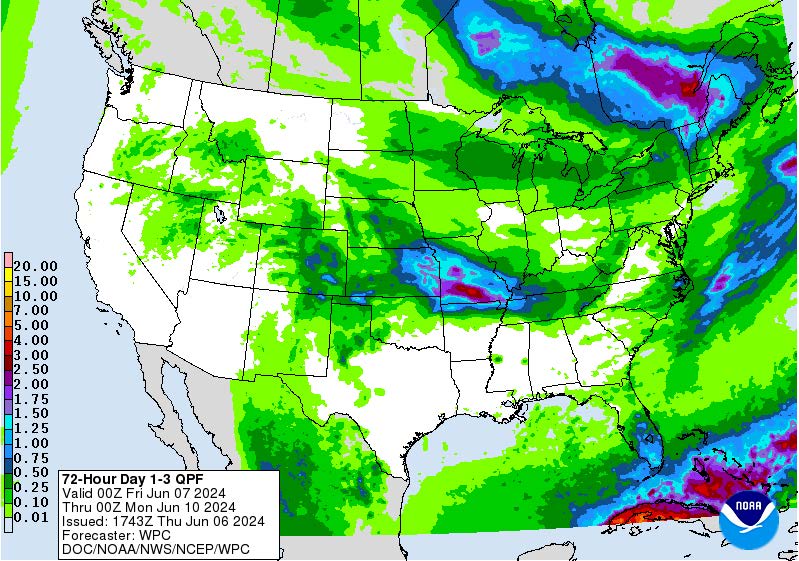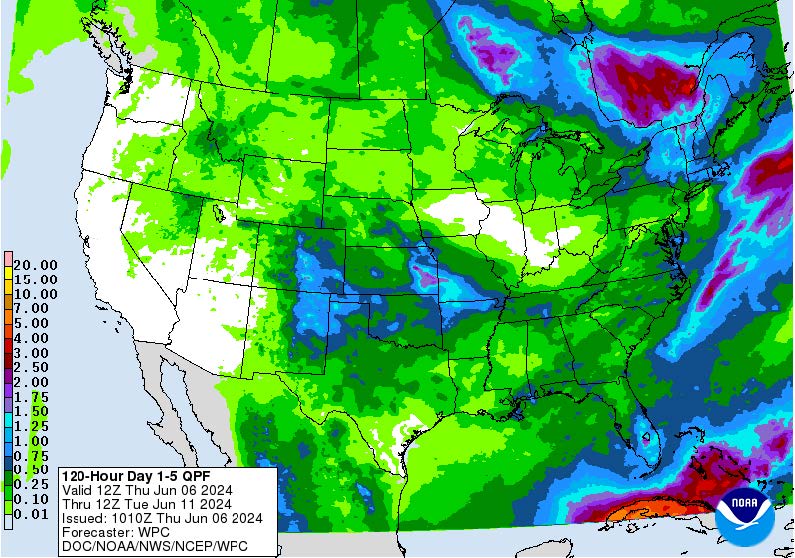Cotton Comments | June 6, 2024
Current Situation
Rainfall has caused periodic delays in planting across much of the cotton growing areas of Oklahoma. Most irrigated acres have been planted but rainfall continues to cause delays for dryland acres. Heavy rains and hail have also caused some acres to need to be replanted. Once fields dry up, there should be good planting moisture and a good soil moisture profile to get dryland acres up and going.
There are a few things to consider following heavy rains in terms of weed control. The initial rains we received were good for incorporating preemergence herbicides, where they were used. On the other hand, excess rainfall can cause some of these herbicides to break down faster. Be sure to keep an eye out for new flushes of weeds so timely postemergence applications can be made. Also, consider using a POST residual herbicide (Dual Magnum, Outlook, Warrant, etc.) with your postemergence burndown to help control weeds that may emerge with future rains or irrigation events.
Wheat harvest was in full swing prior to the rains and is picking back up now that fields are drying. Reports of some good yields have come in.
Early-Season Pest Considerations
As was discussed in the previous newsletter, thrips are the biggest early-season pest
concern for Oklahoma cotton production. Some producers have reported fields already
being sprayed. So be sure to keep an eye on thrips populations as cotton emerges and
develops until around the 5-leaf stage. Heavy thrips infestations can slow development
for emerging plants and cause stand losses. Scouting fields from
emergence to the five-leaf stage to monitor for thrips infestations is important to
avoid losses. Be sure to monitor for thrips and damage caused by thrips (pictured
below).
There are several options for thrips control currently available. Insecticidal seed treatments are a good way to get some early-season protection. Over-the-top broadcast applications may be needed as well. Several options are available including acephate, Bidrin, and others. Thryvon cotton is a good tool for thrips control as well. However, if your cotton has the Thryvon trait be sure to continue scouting because control measures may be justified.
Thrips on cotton action thresholds from Texas A&M AgriLife Extension
| Crop Stage | Action Threshold |
|---|---|
| 1 true leaf | 1 thrips per plant |
| 2 true leaves | 2 thrips per plant |
| 3 true leaves | 3 thrips per plant |
| 4 true leaves | 4 thrips per plant |
| 5-7 true leaves | Treatment is rarely justified |
| Image | Caption |
|---|---|
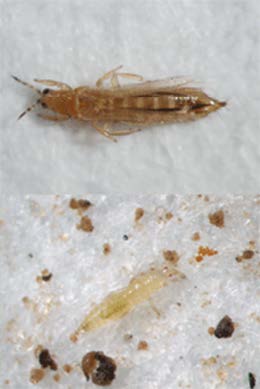 |
Example of a thrip.
Photo credit: Texas A&M AgriLife Extension |
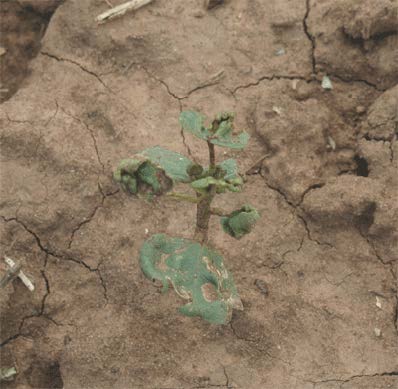 |
Example of damage from thrips.
Photo credit: Texas A&M AgriLife Extension |
Several reports of grasshoppers have come in over the past few weeks, and some applications have been made to help manage these pests. Grasshoppers can feed on the foliage of cotton, especially recently emerged cotton. Unacceptable defoliation and stand loss can occur if pressure is high enough.
There are a couple of control options and things to consider when targeting grasshoppers. Often, spraying field borders is sufficient for control of these pests, but be sure to scout several areas within the field to determine where the pest is distributed. Control applications should be made when >30 percent defoliation has occurred or there is unacceptable stand loss. Several products are available to control grasshoppers, such as Vantacor and Bidrin.
Photo credit: Alabama A&M and Auburn Universities
Weather Update
Days 1-3 Precipitation Forecast
Days 1-5 Precipitation Forecast

